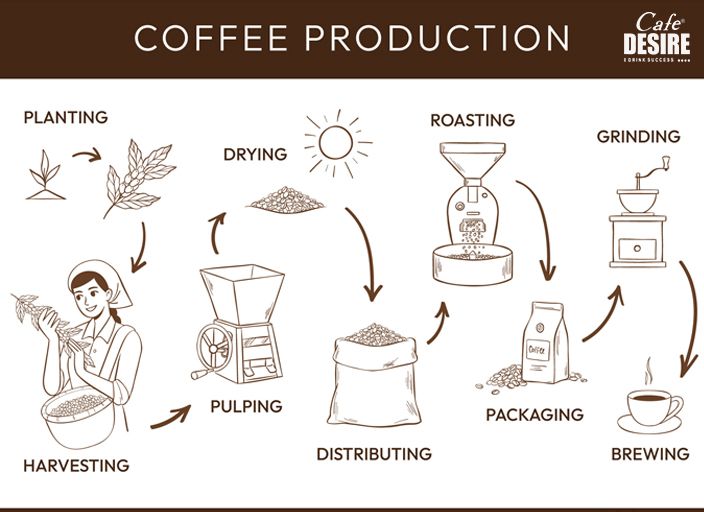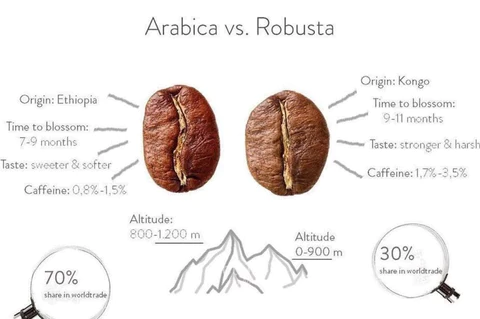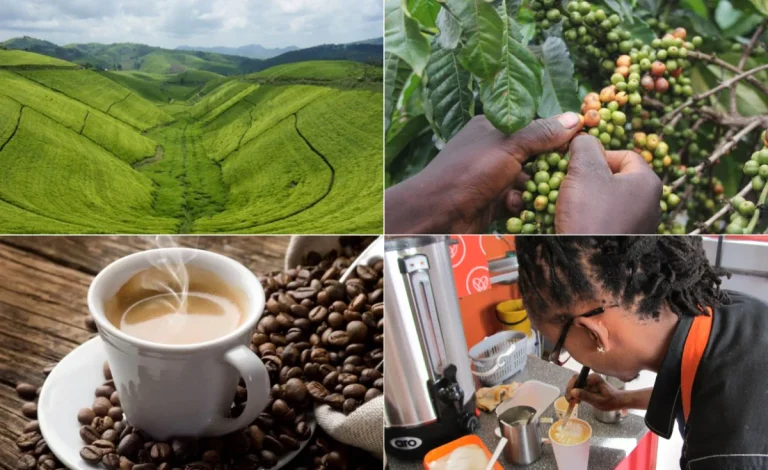Are you curious about how your morning cup of coffee goes from bean to cup?
In this article, we will take you through the intricate process of coffee production, step by step. From the planting of coffee trees to the final packaging of the beans, we will explore each stage of the journey.
Whether you’re a coffee enthusiast or simply interested in learning more about this beloved beverage, join us as we uncover the fascinating world of coffee production.
Key Takeaways:
- Coffee production is a complex and intricate process that involves various stages, from planting to packaging.
- The type of processing method used, whether dry or wet, greatly affects the flavor and quality of the coffee.
- Coffee roasting and grinding play a crucial role in enhancing the aroma and taste of the final product.
Introduction
Coffee production is a fascinating journey that involves intricate processes, from cultivation to consumption, ensuring high quality and sustainability in the industry.
From the moment coffee beans are carefully planted in the fertile soils to the meticulous harvesting process, every step is crucial in delivering that perfect cup of coffee. Producers around the globe are dedicated to maintaining the delicate balance between environmental sustainability and meeting the increasing demands of the industry. With the rise of specialty coffee, there is a renewed focus on the unique flavors and characteristics of different coffee beans, pushing the boundaries of taste and quality.
Overview of the Coffee Production Process
The coffee production process encompasses harvesting ripe cherries, roasting to perfection, and expertly brewing the beans, reflecting a blend of artisanal craftsmanship and modern industry practices.
Diving deeper into the process, the methodical approach starts with carefully selecting only the finest, ripest coffee cherries from the trees, ensuring optimal flavor profiles. These cherries are then processed through methods like pulping or natural drying, where precision is key to maintaining the quality. Next comes the crucial stage of roasting, where the beans undergo meticulous temperature control to unlock unique flavor notes inherent to each bean variety.
After roasting, the beans are skillfully ground to the desired consistency, taking into account factors such as brewing method and consumer preferences. This step is crucial in unlocking the full aroma and taste potential locked within the coffee beans. The freshly ground coffee is packaged with care, often in environmentally-friendly materials, ready to be savored by discerning coffee enthusiasts.
Planting
Planting coffee beans involves selecting the right location with optimal climate conditions, altitude, and soil type to ensure successful cultivation.
Harvesting
Harvesting coffee cherries requires precision timing and a skilled team to ensure optimal picking methods for the best quality yield.
Cherry Processing
Processing coffee cherries involves two primary methods: the dry method and the wet method, each influencing the final quality of the beans.
The Dry Method
The dry method of processing coffee cherries involves sun-drying the beans, resulting in a distinct flavor profile and enhanced quality characteristics.
During the sun-drying process, the cherries are typically spread out in a thin layer on raised beds or concrete patios under the sun’s warmth. This method allows the beans to gradually dry over a period of several days, during which natural sugars and flavors intensify within the beans. As the beans dry, they develop a rich, full-bodied flavor with floral and fruity undertones.
This extended exposure to sunlight is crucial as it impacts the overall flavor complexity and depth of the final coffee product. Factors such as altitude, climate, and duration of drying play key roles in determining the quality of the beans. The slow drying process helps achieve optimal moisture content, ensuring a balanced and flavorful cup of coffee.
The Wet Method
The wet method of processing coffee cherries involves pulping and fermentation, resulting in bright acidity and distinct flavor notes in the brewed cup.
During the pulping stage, the outer skin and pulp of the coffee cherry are removed, exposing the mucilage-covered beans. This delicate process ensures that the beans maintain their essential oils and flavors.
The subsequent fermentation stage involves soaking the beans in water for a specific period. This fermentation breaks down the remaining mucilage, imparting unique flavors to the beans.
The outcome of wet processing is a cleaner, more vibrant taste profile with pronounced acidity. The careful control of fermentation time and water quality are crucial considerations in producing high-quality beans.
Coffee Milling Process
The coffee milling process involves precision sorting and grinding to maintain the quality and consistency of the beans, reflecting expertise and attention to detail.
Coffee Tasting Process
The coffee tasting process, also known as cupping, involves expert evaluation of aroma, taste, and flavor profiles, offering a sensory journey into each cup’s unique characteristics.
Coffee Roasting
Coffee roasting is a skillful process that transforms green beans into aromatic delights through expert control of roasting profiles, highlighting the nuances of each bean’s flavor and aroma.
Coffee Grinding
Coffee grinding is a crucial step that enhances aroma, taste, and freshness, requiring precision equipment and expertise in blending for a perfect brew.
Packaging
Packaging coffee involves strategic decisions in distribution, retail placement, and brand positioning to showcase the varieties and unique qualities of each blend.
Conclusion
The coffee production industry thrives on expertise, quality, and sustainability, offering a diverse journey from bean to cup for coffee enthusiasts worldwide.
From the meticulous cultivation of Arabica and Robusta coffee plants in lush mountainsides to the precise harvesting and processing methods, every step in the production journey is vital in preserving the rich flavors and unique characteristics of each coffee bean. Roasters and baristas then masterfully transform these beans into aromatic brews that delight the senses, showcasing the culmination of industry knowledge and passion for elevating the coffee experience.
About the Author
Rudy Caretti is a renowned expert in the coffee industry, with a passion for sharing his journey, insights, and trends shaping the world of coffee production.
Rudy Caretti, with decades of experience and a dedication to excellence, has become a leading voice in the coffee sector. Through his vast knowledge and unwavering commitment, he has significantly influenced the direction of coffee production and consumption globally.
With a keen eye for emerging trends and a knack for identifying opportunities for innovation, Rudy Caretti has played a pivotal role in advancing sustainable practices and promoting ethical sourcing in the coffee supply chain.
Frequently Asked Questions
What is the process of coffee production?
The process of coffee production, also known as “From Bean to Cup,” involves several steps including planting, harvesting, processing, roasting, and brewing. Each step is crucial in creating a delicious cup of coffee.
What are the different types of coffee beans?
The two main types of coffee beans are Arabica and Robusta. Arabica beans are known for their delicate flavor and are typically used for gourmet and specialty coffees. Robusta beans, on the other hand, have a stronger, more bitter taste and are often used in blends and instant coffee.
How are coffee beans harvested?
Coffee beans are typically hand-picked when they are ripe. This is a labor-intensive process that ensures only the best quality beans are selected. However, in some cases, machines may be used to harvest the beans.
What happens during the processing stage of coffee production?
The processing stage involves removing the outer layers of the coffee cherry to reveal the bean inside. This can be done through either a dry or wet process, and each method produces a different type of coffee.
Why is roasting an important step in coffee production?
Roasting is a crucial step as it brings out the flavor and aroma of the coffee beans. The length and temperature of the roasting process can greatly impact the final taste of the coffee.
How does coffee get from the bean to your cup?
After roasting, the coffee beans are ground and brewed with hot water to create the final cup of coffee. This process allows the coffee to release its unique flavors and create the delicious beverage we know and love.






